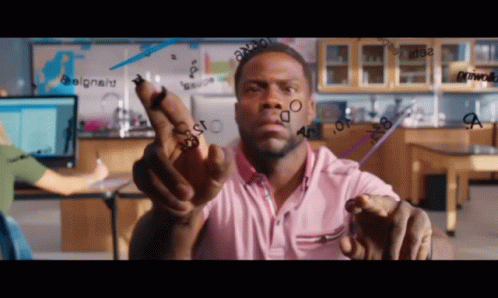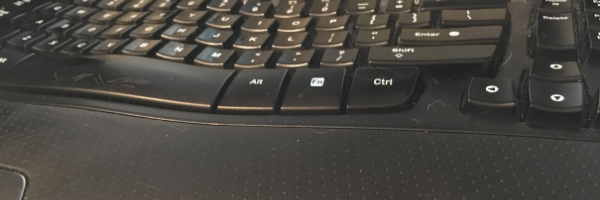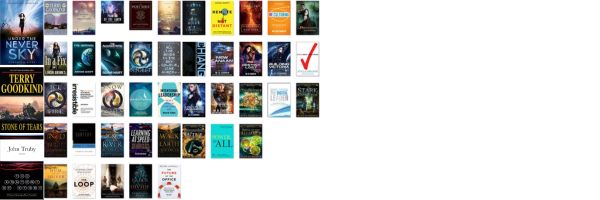And now we went to Cincinnati! The big draw there was the Cincinnati Zoo which was honestly outstanding. We had a blast with some new friends while we were there, but are definitely ready to get back to a regular schedule. Now, let’s take a look at my Editing Path Part 6.
Drawing from the Well
I managed to get a little bit done before we left town again. I’m trying to get back into the good habit of morning writing. When I do, great progress occurs. As you can see below, I cracked 40k so that’s very good.
Page 83/276
40,968/143,920 Words
Filling the Well
I only finished one book last week, but it was exquisite: Wizard’s First Rule. Wow! It’s already a 6-star best book of the year and, therefore, in the running for 7-star Book of the Year. I immediately bought the follow-up, Stone of Tears, and dove in. I’m already 10% of the way through it. I can’t read it fast enough.
#43/105 for #ProjectBookworm2023
I finally sat down and watched all of Bridgerton, including Queen Charlotte. After my wife finished Queen Charlotte, she kept commenting on how good it was so I got interested. I’m here to say that she was right. I enjoyed it thoroughly.
Well Chat
We’re getting down to the wire with the editing process. The fourth draft is complete so now it’s time for the finest of details, the things that are hard to quantify. That means it’s time to use a brilliant, powerful tool: ProWritingAid.
Now, ProWritingAid is A LOT. It’s a powerhouse. After a lot of time reviewing this utility, I’ve honed in on four areas: the Goal Checklist, suggested Improvements, Core: Overused, and re-italicizing. Now, that last part isn’t really part of ProWritingAid. That’s a note for me to re-italicize everything from Draft 4 to Draft 5 (after working in ProWritingAid) because that formatting is lost once I upload to PWA.
So, I go to the website, log into my FREE account, and go to Menu>Documents. I click New Doc and past the entire manuscript in. That part takes a few minutes as the text comes in and the utility does its initial analysis. Then we get into the Goal Checklist. Once you’ve selected the desired genre for your manuscript, a ton of analysis cranks through your draft. This covers many key areas:
- Grammar/Spelling
- Style Score: The style suggestions cover issues like repeated sentence starts, clunky word order and phrasing, hidden verbs, and more. There’s a lot more to it, but it’s important stuff that’s hard to keep track of across an entire document.
- Sentence Length
- Readability Grade: This is the grade level individual that would be able to handle your manuscript. For example, if the score comes up 7, a seventh grader could read it. A lower score means greater accessibility…to a point.
- Sentence Variety: This is a simple calculation of standard deviation from the mean sentence length. The higher the value, the higher the variance in sentence length. There’s a sweet spot for each genre.
- Glue Index: This is a tough one to understand but equally important. Glue words are like “the, of, from, etc.” that stick the nouns, verbs, and adjectives together to actually form a sentence. If you have too many in a single sentence, however, it makes the sentence harder to read. Breaking up sentences or reducing it to the salient point can reduce the number of glue words and smooth out your manuscript. This is usually a section that trips me up and requires attention.
- Passive Voice
- Complex Paragraphs: This is another measure similar to the Glue Index that looks at how hard it is to read your manuscript. To improve the targeted paragraphs, you can shorten your sentences, use straightforward vocabulary, and avoid jargon.
- Conjunction Starts
- Slow Pacing
- Emotion Tells: This is an important aspect of “Show, Don’t Tell” where instead of naming emotions, you use physical and mental reactions to suggest the emotion instead. The fewer named emotions, the better.
- -ing Starts
- Dialogue Tags: Limit to 15% of dialogue lines.
- Unusual Dialogue Tags: Using dialogue tags other than said or asked pull readers out of their immersive experience. Those two named should be used at least 70% of the time to prevent that issue.
- Dialogue Tags with Adverbs: These should be used at an absolute minimum. Usually if you write “said angrily,” you can use a stronger verb like “growled” to improve the punch of the sentence and reduce word count.
- Weak Adverbs: This is the same note as with the Dialogue Tags with Adverbs above.
That was ALL just the Goal Checklist. After that, there are Improvements suggestions which are much more targeted and, typically, fewer in number. These should be parsed through individually. Then there’s the Core: Overused section. For me, this is critical. It looks at your manuscript and searches for words that you use just too much. “Just” is one of those offenders for me. I’m sure you have yours. This allows you to target those specifically and change or remove them as is appropriate.
Once those changes are exported and italics returned, the fifth draft is done. We’re almost there. Next week, we’ll review the Gold and Green edits together to arrive at the final draft. See you next week!
The Brown Edit– First Read-ThroughThe Red Edit – Developmental EditThe Orange Edit – Fine Detail EditThe Blue Edit – Line EditThe Purple Edit – ProWritingAid Edit- The Gold Edit – Edit Out Loud Edit
- The Green Edit – Final Read-Through and Polish
May the tide carry you to safer shores.
BSG








